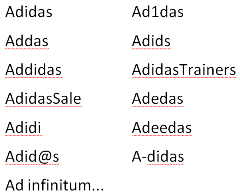The clock is ticking… and soon the final curtain will come down on what was the founding father of PPC – Yahoo! Search Marketing (nee Overture).
All we can say is: the end can’t come soon enough. The clunky interface was delivered late and was dated even before it was birthed. Little was done to improve it, and as Google evolved and Microsoft entered the market, there it stood, stuck in time.
However, that was just about bearable as long as the performance worked. But, as the months went by the slide continued… 20%, 15%, 10% … now about 5% of Google’s reach.
Yet, this article is not about that… What has become increasingly unbearable is the active encouragement of click misbehaviour on Yahoo’s part. We won’t use the word ‘fraud’ for fear of litigation – but let’s call it click ‘flawed’.
We give you a tale of increasing desperation which has led to the final insult as Yahoo! enters it’s last days. Continue reading “Yahoo! Search Marketing – The Final Insult”


 The ‘hit’ of not optimising for mobile devices is clear: from smartphones in particular, the bounce rate can be close to twice as high, and the number of pages viewed halves – so for as long as you don’t have a mobile site, you’re limiting your opportunity to reach and sell to your mobile visitors.
The ‘hit’ of not optimising for mobile devices is clear: from smartphones in particular, the bounce rate can be close to twice as high, and the number of pages viewed halves – so for as long as you don’t have a mobile site, you’re limiting your opportunity to reach and sell to your mobile visitors.



 Just the other day the MD was with a tree surgeon in his back garden. A
Just the other day the MD was with a tree surgeon in his back garden. A 

 Just like the instant version of coffee, Google Instant has ‘freeze dried’ the flavour of search and reformed it in a more immediate format. But, just like instant coffee, what you get is a poor imitation of the ‘real thing’.
Just like the instant version of coffee, Google Instant has ‘freeze dried’ the flavour of search and reformed it in a more immediate format. But, just like instant coffee, what you get is a poor imitation of the ‘real thing’.



